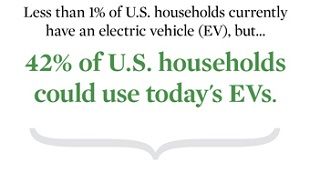Infographic on Electric Transportation

There is a problem with the logic, however, that is revealed in the 20-page PDF linked at the bottom. The eco-benefits are calculated based on the “well-to-wheels” comparison of both gasoline and electricity in the U.S. (as of 2009). This, as scientists should know, is specious. The question is not the composition of the average grid-mix, but rather the composition of the incremental grid-mix. I.e., we need to ask ourselves: What happens when I add an incremental load to the grid when I charge my car? The answer, sadly, is that in most cases, is that somewhere, more coal (by far the dirtiest of all the power generation resources) is burned.
Having said that, I still stand behind the cause of electric transportation. The goal of replacing 230 million cars and trucks, while removing coal from our grid-mix altogether, is one that will require several decades, but it’s one that will be achieved. And when it is, the entire grid will need to produce only 14% more electricity than it’s doing now, due to the dramatic improvement in efficiency that EVs represent (over 80%, versus about 20% for internal combustion engines). And in the meanwhile, EVs will also act as a repository for off-peak wind, thus actually accelerating the integration of renewable energy.

Good post Craig.
We disagree on the nature of the future, and time will tell. But while we disagree, I have no problem with someone who has hopes for a technology so long as they are honest about the nature of that technology.
In the future, we might possibly have a grid dynamic that would make these vehicles net beneficial, but driving one now is worse than driving an efficient vehicle. If you’re honest about that, we can see eye to eye even though we have different goals.
🙂
I will state that EV’s only serve to improve wind energy integration if you plug them into a smart-charger, and only if you are in a region that currently is experiencing significant wind curtailment (TX, OK, IA, MN, ND, SD, etc… NOT New England, New York, New Jersey, or the West Coast). Otherwise the best you can hope for is that you use more natural gas than coal, and you can help ensure that by plugging in during the day rather than plugging in at night.
I did want to note that it’s sad that the Union of Concerned Scientists have degenerated into a bunch of illogical yahoos that could publish something like that even though they’ve been specifically scolded for their false premise regarding grid mix.